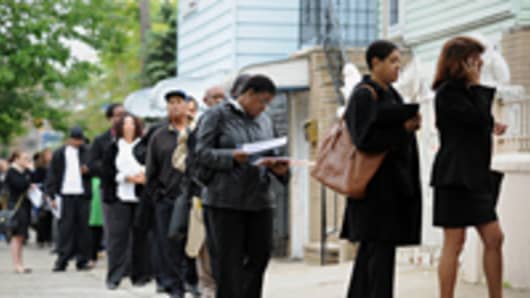The US will make little progress tackling high unemployment before 2014 unless the Federal Reserve eases policy further, one of the central bank’s leading officials has warned in the run-up to a meeting next week where the option of “QE3” will be on the table.
The comments by John Williams, president of the Federal Reserve Bank of San Francisco, show how the weak economy is pushing the central bank towards action to support growth.
In an interview with the Financial Times, he forecast that unless “further action” was taken, there would be a lack of progress in boosting the jobs market – where the unemployment rate has been stuck around 8.2 percent since the start of the year – over the next 18 months.
But he declined to call directly for a Fed move. “I think the argument against further action is the question of uncertainty around the effects, the costs and the benefits of doing so,” he said.
Mr Williams is regarded as close to the centre of gravity on the rate-setting Federal Open Market Committee, of which he is a voting member this year. The FOMC will conclude its next meeting on August 1.
A series of Fed officials, including chairman Ben Bernanke, have said the central bank will need to consider further action unless it sees progress towards lower unemployment.
Mr Williams warned of “pretty significant” downside risks to the US economy from the eurozone crisis, the looming “fiscal cliff” of spending cuts and tax increases, and the dangers of a global slowdown.
If the Fed launched another round of quantitative easing, Mr Williams suggested that buying mortgage-backed securities rather than Treasuries would have a stronger effect on financial conditions. “There’s a lot more you can buy without interfering with market function and you maybe get a little more bang for the buck,” he said.
He added that there would also be benefits in having an open-ended programme of QE, where the ultimate amount of purchases was not fixed in advance like the $600 billion “QE2” programme launched in November 2010 but rather adjusted according to economic conditions.
“The main benefit from my point of view is it will get the markets to stop focusing on the terminal date [when a programme of purchases ends] and also focusing on, ‘Oh, are they going to do QE3?’” he said. Instead, markets would adjust their expectation of Fed purchases as economic conditions changed.
Mr Williams was unexcited by the idea of cutting the rate of interest paid to banks on their excess reserves from today’s 25 basis points, another possible way to stimulate the economy, saying that the “costs and benefits are pretty small either way”.
He also questioned whether the Bank of England’s new “funding for lending” scheme, which will provide cheap funding for British banks that increase their lending to households and businesses, could be a direct model for the US.
“This is where you really have to ask yourself a question about what is broken,” he said. “In the US funding costs for a bank are generally very low.”


